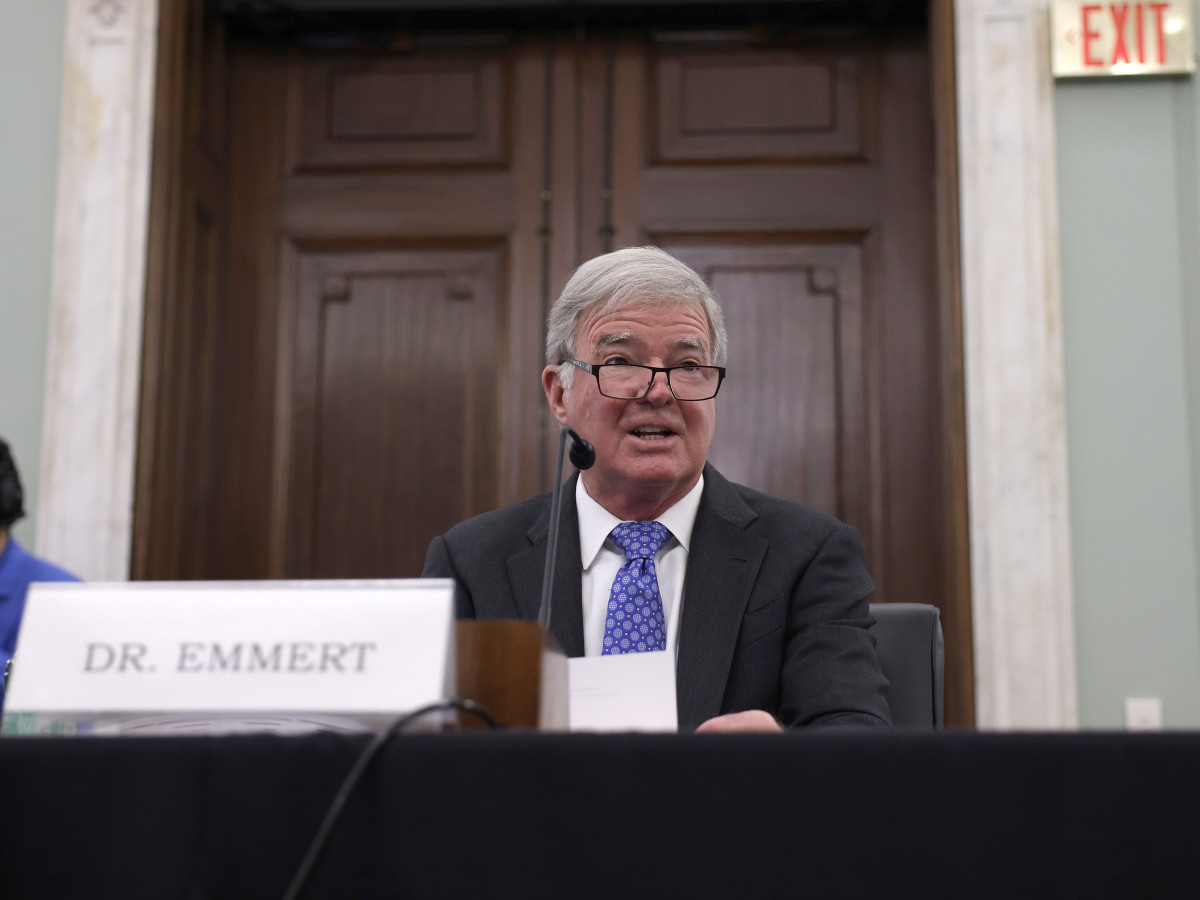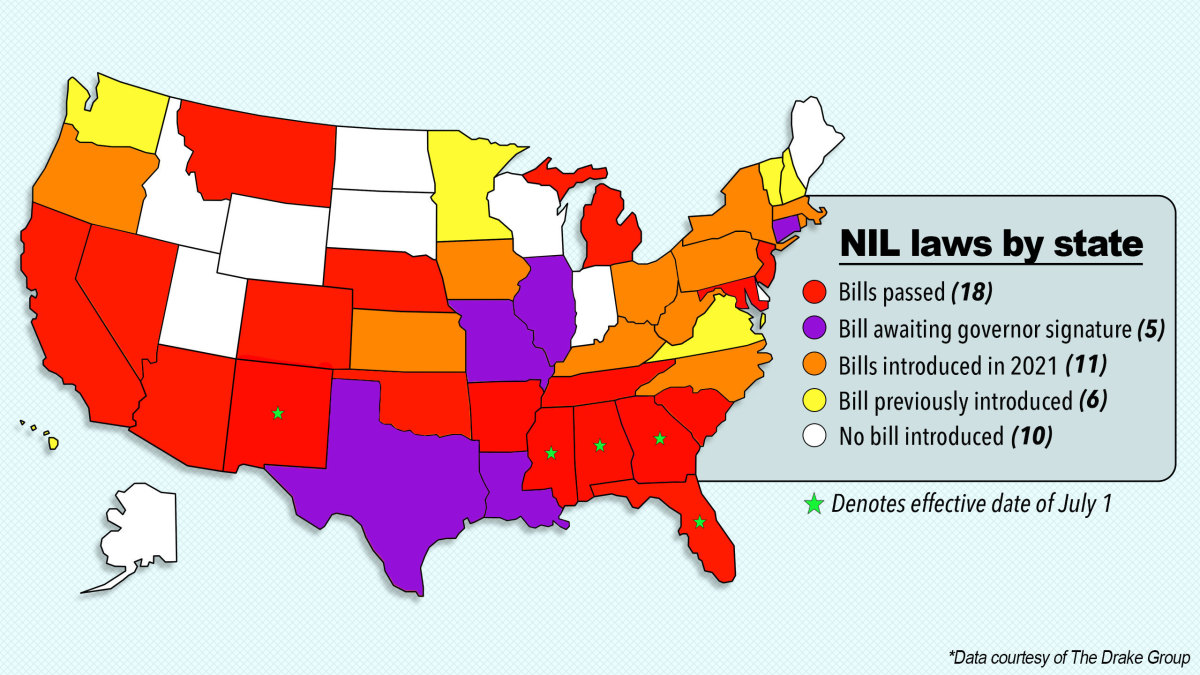NCAA Senate Hearing Brings Potential Solution for NIL's Biggest Obstacle Into Focus

WASHINGTON, DC — Sen. Maria Cantwell wasted no time.
In fact, in her very first question at Wednesday’s Senate hearing on athlete compensation, the junior senator from Washington touched on what has been, so far, the biggest hurdle in reaching a compromise between Republicans and Democrats on a bi-partisan college athletes rights bill.
From her pulpit inside a lavish, marble walled Senate meeting room, Cantwell asked NCAA president Mark Emmert if his governing body could help small, low-resource schools fund what may be requirements under a federal bill: expanding healthcare and scholarships for former athletes.
A winding and sometimes rambling answer from the NCAA president produced two relevant words.
It’s doable.

Wednesday’s Senate hearing—the fifth on Capitol Hill over how NCAA athletes should earn money from their name, image and likeness (NIL)—produced little fireworks, significant revelations or even real interesting banter. Sure, Sen. Ted Cruz (R-Texas) peppered Emmert about the NCAA’s stance on transgender athletes. And, yes, Sen. Marsha Blackburn (R-Tenn.) questioned Emmert’s leadership directly to his face.
But the most enlightening message of this three-hour affair came between the lines of Cantwell’s first question: Democrats are prepared to only support a broad bill governing athlete compensation that incorporates long-term medical care and educational opportunities for athletes after they leave college.
MORE: Inside the Hidden NIL Industry and the Changing World for College Athletes
In fact, this argument—a broad bill expanding beyond NIL vs. narrow legislation focusing exclusively on NIL—is at the center of months-long negotiations among five U.S. senators that Cantwell brought together to strike a compromise as a bevy of state NIL laws are days away from taking effect. Wednesday’s hearing was somewhat of a public unveiling of the closed-door conversations among the three Democratic senators and two Republicans: Cantwell, Cory Booker (D-N.J.) and Richard Blumenthal (D-Conn.), as well as Roger Wicker (R-Miss.) and Marsha Blackburn (R-Tenn.).
While the trio of Democrats champion a broad bill, Wicker and Blackburn are against such legislation for fear that smaller schools—many of which lose money on athletics—will be unable to afford to extend healthcare and scholarships to former athletes.
In acknowledging that this issue is the “crux” of the debate, Emmert revealed a potential solution. He believes that wealthier programs can share revenue with poorer institutions to finance these elements beyond NIL.
“There’s a way to determine within D-I resources of how to cover those costs,” Emmert told lawmakers. “There’s a variety of different vehicles. The challenge everyone has to recognize is there’s no NCAA money—it’s all the schools’ money. If the member schools want to, and I’d be willing to put this question to them, say ‘How can we find a mechanism for funding out of pocket expenses at low-resource schools?’
“It’s certainly a doable phenomenon.”
This is a potential pathway to what those in the industry believe is the only real solution to solving the chaotic scene upon college sports: a uniform federal bill. If the NCAA can guarantee the low-resource schools a way to finance these items, broad-based NIL legislation may swiftly move through the legislative process.
However, time is running out. A whopping 18 states have passed their own laws to govern NIL, at least five of which take effect July 1. The sweeping movement to pass state NIL laws is at a breakneck pace. According to research from SI and data from the Drake Group, the number of states to have passed laws has tripled in three months. Meanwhile, the number of states without an NIL law has gone from 31 in March to just 16 today.
Schools in states with NIL laws will operate under them while others follow the NCAA’s own legislation, which should be approved by the end of the month and is expected to offer athletes less freedoms than many state statutes.

Wednesday’s hearing unfolded as negotiations among the five senators have somewhat stalled. And so with them went faint hope that a compromise could be struck by July 1, legislative sources tell Sports Illustrated.
For a while, this so-called chaos will likely ensue in college sports.
“We need your help,” Gonzaga basketball coach Mark Few, one of five witnesses appearing in person at Wednesday’s hearing, told senators. “This is not something the NCAA can fix. We can't run championships when every state has a different rule.”
During the hearing, Emmert declined to reveal whether the organization would file injunctions against states to delay their implementation of NIL law, saying the organization has taken no position but it has been “widely discussed.” Emmert acknowledged that it would be “very challenging” for a school to file suit against its state.
Meanwhile, the NCAA is expected to pass its own legislation by the month’s end, Emmert says, after the Supreme Court rules in the Alston case. The NCAA’s legislation will differ from state laws and it could trigger a wave of litigation—two reasons that the organization is encouraging Congress to create a uniform standard.
That’s where the five-member Senate working group comes in. Cantwell, Booker, Blumenthal, Wicker and Blackburn are attempting to find a middle ground between two noteworthy and diametrically opposing college athlete bills already introduced in Congress: (1) Booker and Blumenthal’s College Athletes Bill of Rights, a somewhat radical and sweeping legislation that includes revenue sharing, long-term medical care, lifetime scholarships and unrestricted endorsements; and (2) Wicker’s narrow bill focused only on NIL and featuring NCAA protections and athlete restrictions.
A compromise bill would be more broad than Wicker’s but not quite as expansive as Booker and Blumenthal’s, all while providing athletes with enough freedoms to satisfy both sides.
So how close are the five lawmakers to agreeing on a proposal?
There is a level of agreement on concepts specific to NIL, legislative sources told Sports Illustrated, but the rub lies with elements extending beyond athlete compensation.
That said, concessions have been made. A revenue-sharing provision has been removed, for instance. The two sides have also agreed on some particulars related to both medical care and educational opportunities for athletes who have left college. For example, under the current proposal, schools would be required to provide athlete medical care for five years after he or she leaves school, not for a lifetime. There is a similar agreement for the length of scholarships—not for a lifetime but for a certain defined number of years.
During the hearing, Blumenthal says he believes that power programs “rolling in the money” should share with small schools to help them finance such costly endeavors.
“They want more than just to be shown the money,” Blumenthal said, a reference to granting athletes rights that go beyond athlete compensation. “I will oppose and help to block any NIL standard that is weaker … than the strongest state standard.”
Howard University president Wayne Frederick, a hearing witness who represented low-resource institutions, says that he believes requiring schools to fund long-term healthcare and education could bankrupt many athletic departments and result in the discontinuation of Olympic sports.
MORE: To Get NIL Right, Congress Must Protect Nonrevenue Sports
He suggests that schools receive funding to assist in these matters, either from the NCAA or from the federal government. Power 5 programs are already required to provide at least two years of post-separation medical care for athletes. The Pac-12 provides four years of this.
For the small programs—those that lose money on athletics as a whole—this is a heavy and expensive burden.
Financial disparity among colleges is a long-time issue. For instance, in 2019, Power five programs got $366 million in distribution from the College Football Playoff. Those in the Group of 5 got $91 million and those in the FCS got $2.6 million.
“As a representative of the MEAC and HBCUs, I have tremendous concerns about many of the proposals that would create tremendous burdens on smaller colleges and universities, particularly those historically Black institutions that do not have the same resources as some of our wealthier and more privileged peers,” he says in written testimony. “It is important to recognize that, out of 1,100 college athletic programs in the NCAA, only 25 programs (2.27 percent) are profitable.”
The hearings on Capitol Hill related to this issue aren’t over. Cantwell suggested that there will be more and that the next hearing’s witness list will include current college athletes—a key group that’s been missing from these discussions.
In the meantime, chaos quickly approaches the college sports world. Just hours before the hearing, two more states, Louisiana and Connecticut, passed NIL bills that now only need a governor’s signature to become law. Eleven more states have introduced bills this spring, some of which are on the fast track to approval.
College athletics' D-Day, July 1, is upon us. And it’s up to five U.S. senators to strike a deal to save the sport from months of mess.
“We are determined to get this done,” Cantwell said. “I wish we weren’t here. I wish we weren’t having to deal with this, but we’re going to make sure this issue is addressed.”
More NCAA Coverage:
